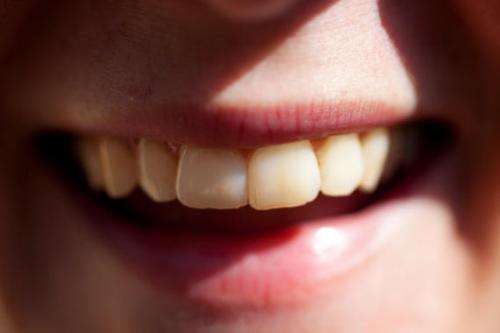Smile dominates many of the initial stages of the brain processing of faces. Credit: Håkan Dahlström
Human beings follows others' state of mind From their facial expressions. "Fear, anger, sadness, and surprise are quickly displeasure inferred in this way," David Beltran Guerrero, researcher at the University of La Laguna, Explains to SINC. But some emotions are more difficult to perceive.
"There is a wide range of more ambiguous expressions, from which it is difficult to deduce the underlying emotional state. "A typical example is the expression of happiness," says Beltran, who is part of a group of experts who have analyzed, in three scientific articles, the smile's capacity to distort people's innate deductive ability.
"The smile plays a key role in recognizing others' happiness. "But, as we know, we are not really happy every time we smile," he adds. In some cases, a smile merely expresses politeness or affiliation. In others, it may even be a way of hiding negative feelings and incentives, such as dominance, sarcasm, nervousness or embarrassment.
To develop this line of research, the authors created smiling faces, mouths, and eyes expressing non-happy emotions, and compared them with faces in which both mouths and eyes express the same type of emotional state.
The main objective was to discover how far the smile skews the recognition of ambiguous expressions, making us identify them with happiness even though they are accompanied by eyes which clearly express a different feeling.
The power of a smile
"The influence of the smile is highly dependent on the type of task given to participants and, therefore, on the type of activity we are involved in," Beltran notes.
When the task is purely perceptive - like the detection of facial features - the smile has a very strong influence, to the extent that differences between ambiguous expressions (happy mouth and non-happy eyes) and genuinely happy expressions (happy mouth and eyes) are not distinguished.
On the other hand, when the task involves categorizing expressions, recognizing if they are happy, sad or any other emotion, the influence of the smile weakens, although it is still important, since 40% of the time, participants identify identity ambiguous expressions as genuinely happy.
However, the influence of the smile disappears in emotional assessment, that is when someone is asked to assess whether a facial expression is positive or negative: "A smile can cause us to interpret a non-happy expression as happy, except when we are involved in the assessment of emotional expression."
According to the authors, the reason why a smile sometimes leads to the incorrect categorization of an expression is related to its high visual "salience" - its attention-grabbing capacity - and its almost exclusive association with the emotional state of happiness.
In a recent study, it was found that the smile dominates many of the initial stages of the brain processing of faces, to the extent that it prompts like electrical activity in the brain for genuinely happy expressions and ambiguous expressions with smiles and non-happy eyes .
By measuring eye movements, it was an ambiguous expression observed that is confused and categorized as happy if the first gaze falls on the area of the smiling mouth, rather than the area of the eyes.
More information: Manuel G. Calvo, Hipolito Marrero, David Beltran. When does the brain Distinguish Between genuine and ambiguous smiles? An ERP study, Brain and Cognition 81 (2013) 237-246.
Manuel G. Calvo, Andres Fernandez-Martin, Lauri Nummenmaa. Perceptual, categorical, and affective processing of ambiguous facial expressions smiling, Cognition 125 (2012) 373-393.
Manuel G. Calvo, Aida Gutierrez-Garcia, Pedro Avero, Daniel Lundqvist. Attentional Mechanisms in Judging Genuine and Fake Smiles: Eye-Movement Patterns, Emotion 2013, Vol 13 (2013), No. 4, 792-802.
Journal information: Brain and Cognition , Cognition , Emotion
Provided by Plataforma SINC























